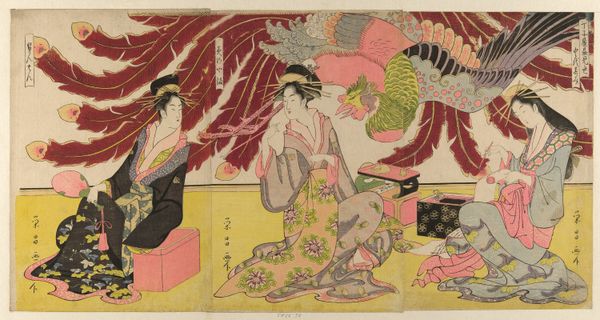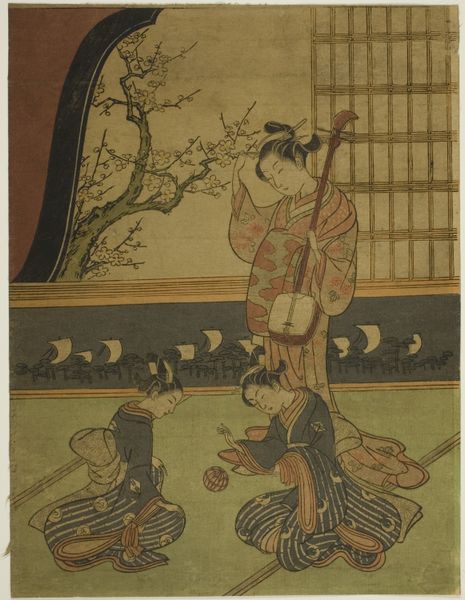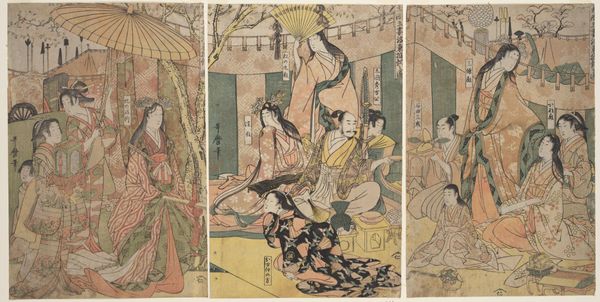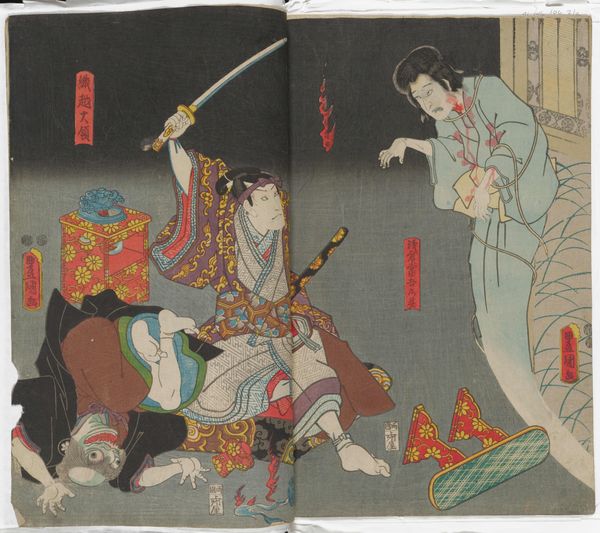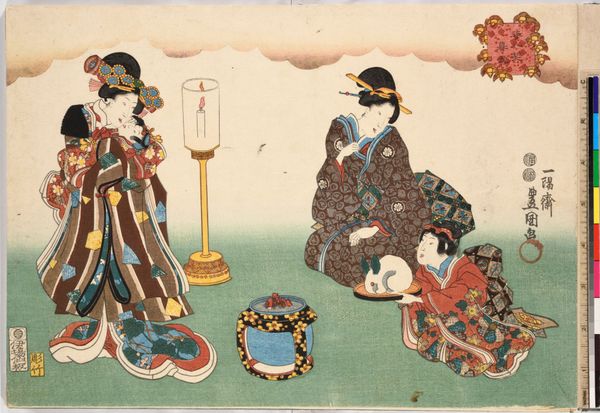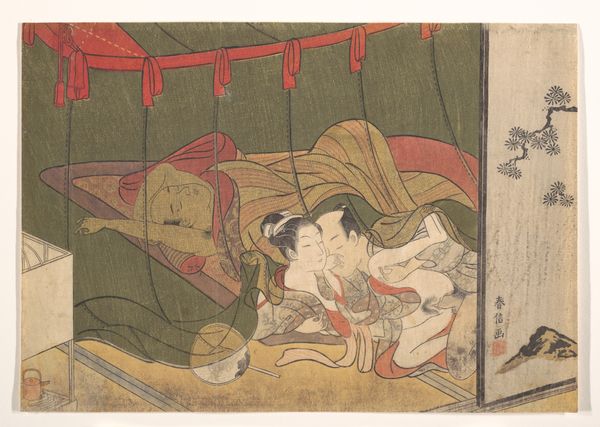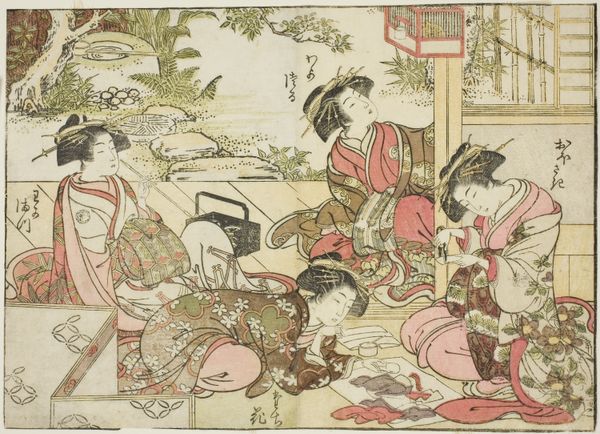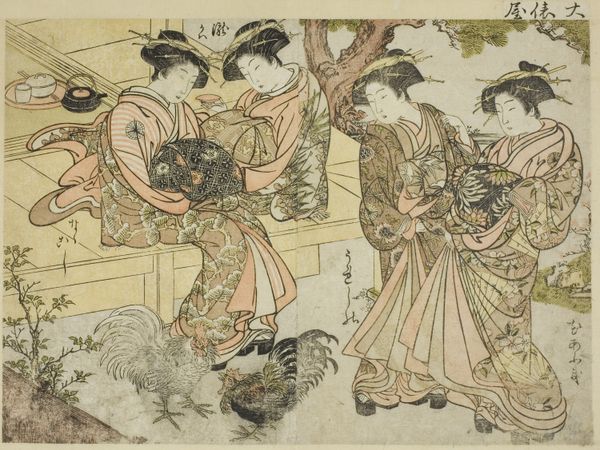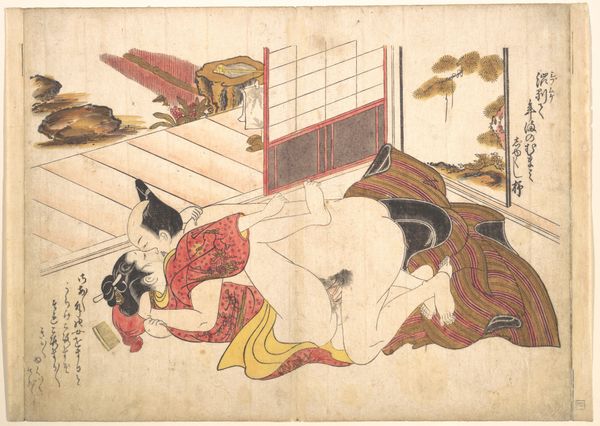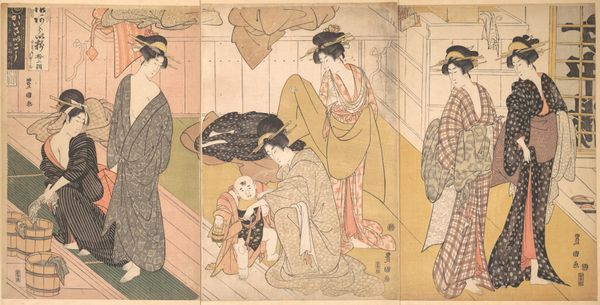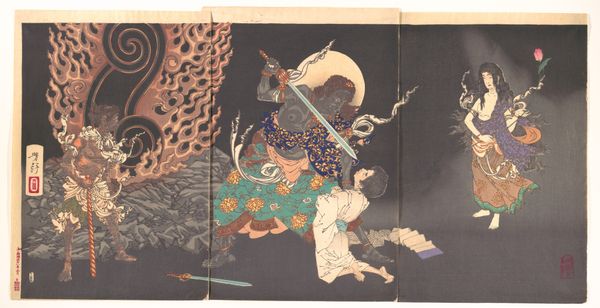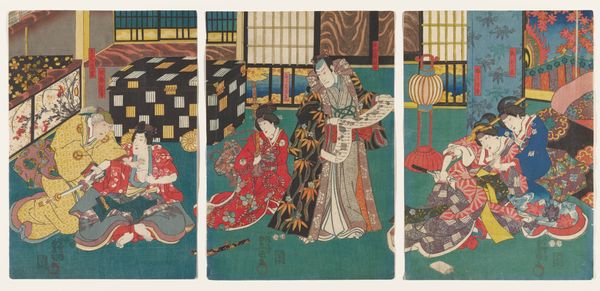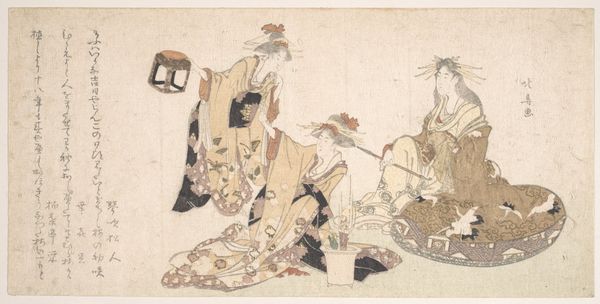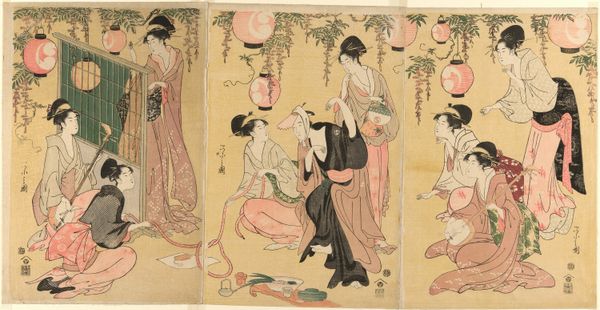
A parody of courtesans on display at the Ogiya (Ogiya mise yatsushi) c. 1795
print, woodblock-print
portrait
asian-art
ukiyo-e
japan
mural art
woodblock-print
naive art
genre-painting
Dimensions: 57 × 95 cm
Copyright: Public Domain
Curator: I’m immediately struck by the opulence of this piece. There’s such lavish use of color and pattern. Editor: Indeed. What we’re looking at is a woodblock print by Chōkōsai Eishō from around 1795, titled "A parody of courtesans on display at the Ogiya." It’s currently housed here at the Art Institute of Chicago. Curator: "Parody" is an interesting choice of words. It has that feel of the gaze and its historical context. Can you speak a bit to that? Editor: Absolutely. During this period in Japan, Ukiyo-e prints often depicted idealized images of courtesans. However, Eishō subverts that tradition. Notice how the women are positioned, not as objects of desire, but as figures in their own right. The gaze isn't just outward; it’s self-aware and knowing. Curator: I see that, especially in their expressions. There’s a defiance, perhaps even boredom, which goes against the expected demureness. The peacock imagery, I suppose, it must have a reason as well, am I right? Editor: You're right. The peacock in the background acts as a satirical commentary on wealth and status. The courtesans are, in essence, commodities, and Eishō highlights the artificiality of that system. Think about the labor involved in creating such a detailed print. The woodblock carving, the inking, the pressing—all contribute to the final product, which then enters a cycle of consumption. Curator: So it is also meant to challenge gender norms through subtle gestures? Editor: Precisely. He challenges the traditional representations of women and disrupts our expectations through social commentary. These prints often served as more than mere decorations; they were political statements. Curator: Looking closer at the material—the print itself—I notice the lines aren’t always perfect. There's a certain roughness that almost feels… intentional. Editor: Many Ukiyo-e artists, due to their socio-economic background and place in society at that time, used such 'flaws' in materials, and incorporated them in their work. But more importantly is the statement made at that particular time by such type of representation. I wonder to what extent he might have considered how his prints engaged with existing hierarchies, whether or not his subversion of social roles have impacted his personal experience at the time. It gives one a lot to think about, right? Curator: Definitely food for thought! I hadn’t considered the layered critiques embedded in this work. Thanks for sharing your insights. Editor: It’s been a pleasure! Hopefully, this encourages viewers to examine art with a deeper consideration of both the material processes and the social contexts that shape its creation.
Comments
No comments
Be the first to comment and join the conversation on the ultimate creative platform.
